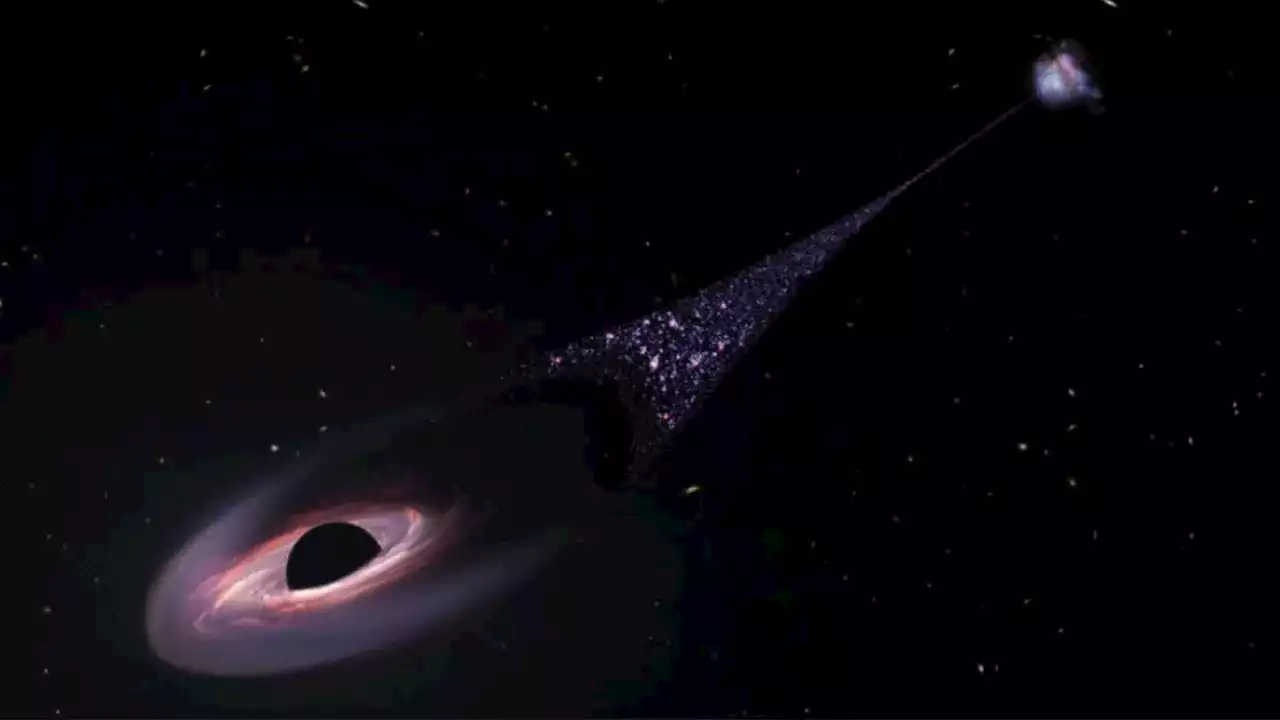Using a Hubble Space Telescope, NASA researchers accidentally stumbled upon a supermassive black hole leaving behind a 'contrail' of newborn stars.
has accidentally captured images of a"runaway" black hole barreling through space, leaving behind a contrail of newborn stars.
The new stars are forming as the black hole is plowing into the gas in front of it to trigger new formations along a narrow corridor. NASA said the sighting is unprecedented.
United States Latest News, United States Headlines
Similar News:You can also read news stories similar to this one that we have collected from other news sources.
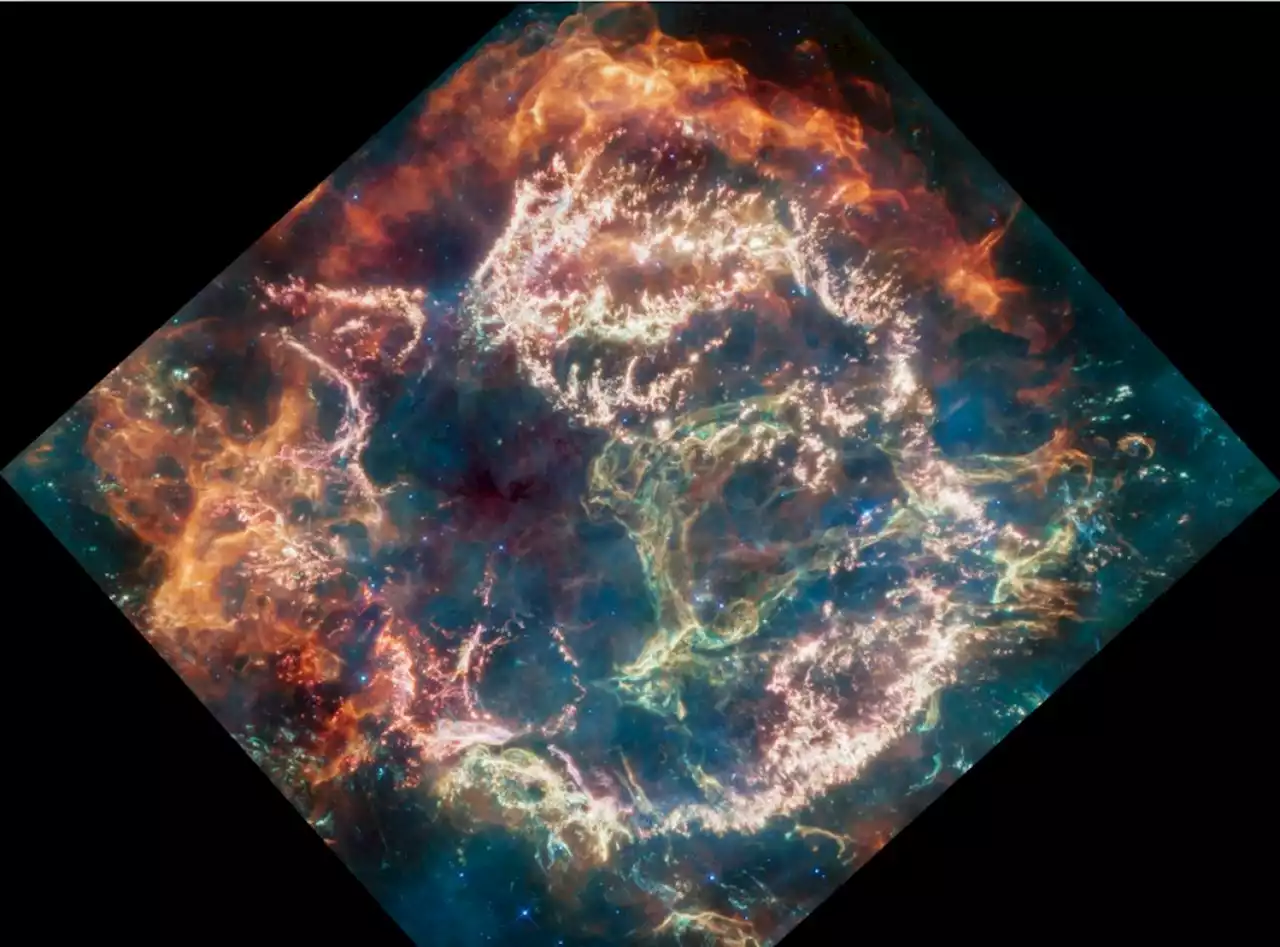 James Webb Space Telescope studies wreckage of titanic cosmic explosion (video, photo)The powerful space telescope captured a stunning image of the Cas A supernova remnant.
James Webb Space Telescope studies wreckage of titanic cosmic explosion (video, photo)The powerful space telescope captured a stunning image of the Cas A supernova remnant.
Read more »
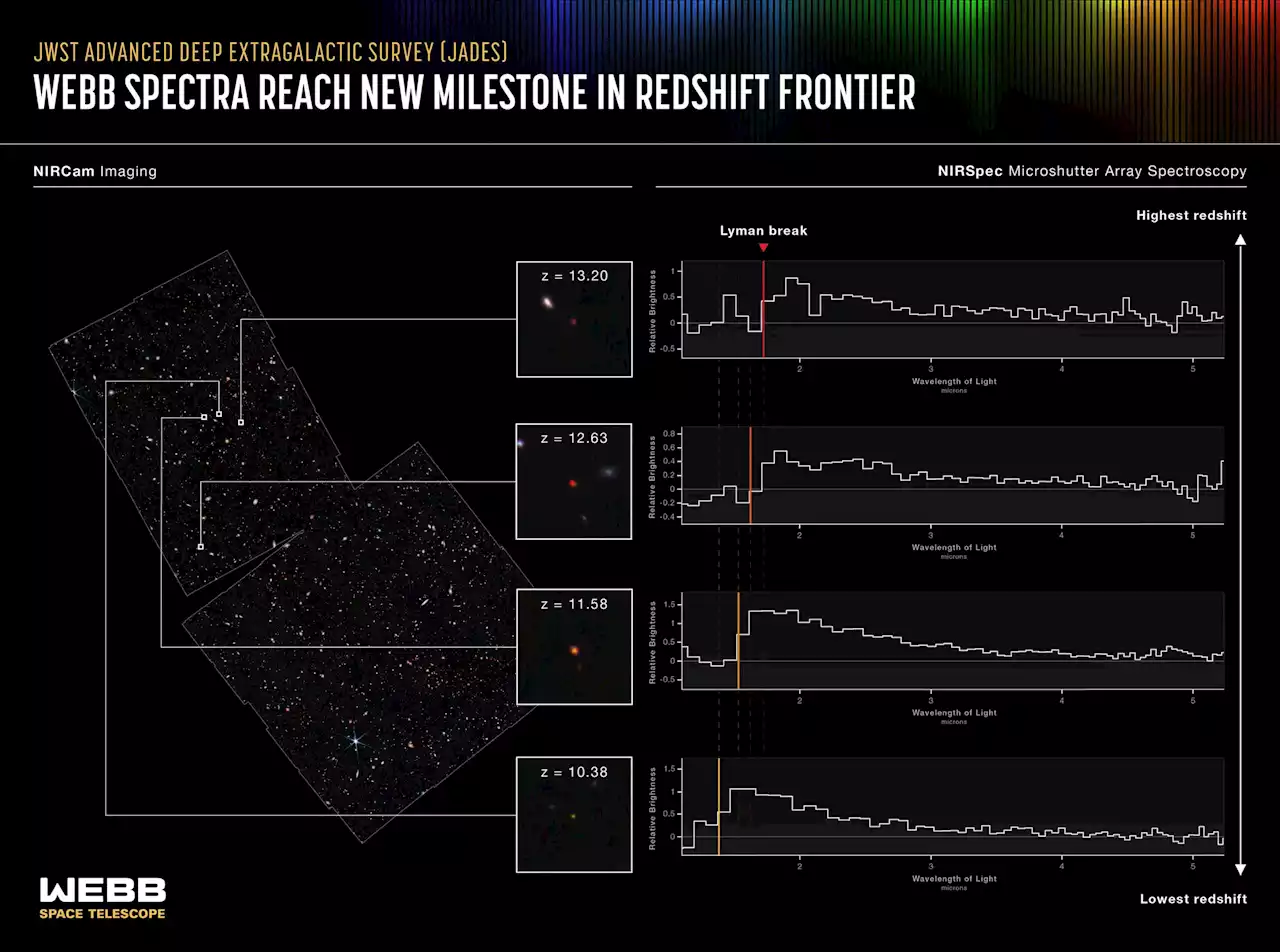 Journey to the Edge of Time: James Webb Space Telescope Reveals Most Distant GalaxiesAstronomers report most distant known galaxies, detected and confirmed by JWST. An international team of astronomers has discovered the earliest and most distant galaxies confirmed to date using data from the James Webb Space Telescope (JWST). The telescope captured light emitted by these galaxies
Journey to the Edge of Time: James Webb Space Telescope Reveals Most Distant GalaxiesAstronomers report most distant known galaxies, detected and confirmed by JWST. An international team of astronomers has discovered the earliest and most distant galaxies confirmed to date using data from the James Webb Space Telescope (JWST). The telescope captured light emitted by these galaxies
Read more »
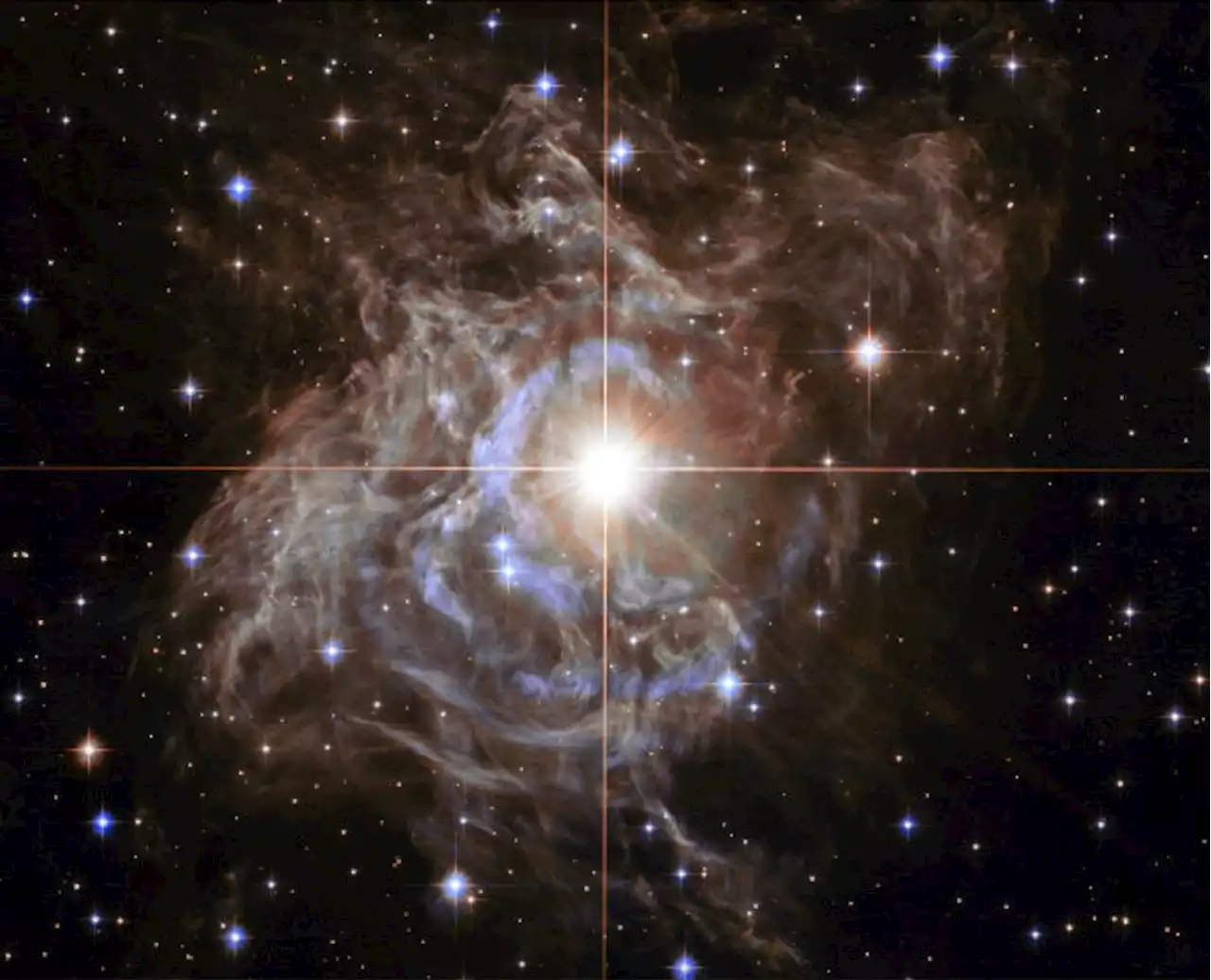 'Hubble trouble' could deepen with new measurement of the universe's expansionPhysicists have improved the accuracy of a technique that uses variable stars to measure distances in the universe, providing a new figure for its expansion rate.
'Hubble trouble' could deepen with new measurement of the universe's expansionPhysicists have improved the accuracy of a technique that uses variable stars to measure distances in the universe, providing a new figure for its expansion rate.
Read more »
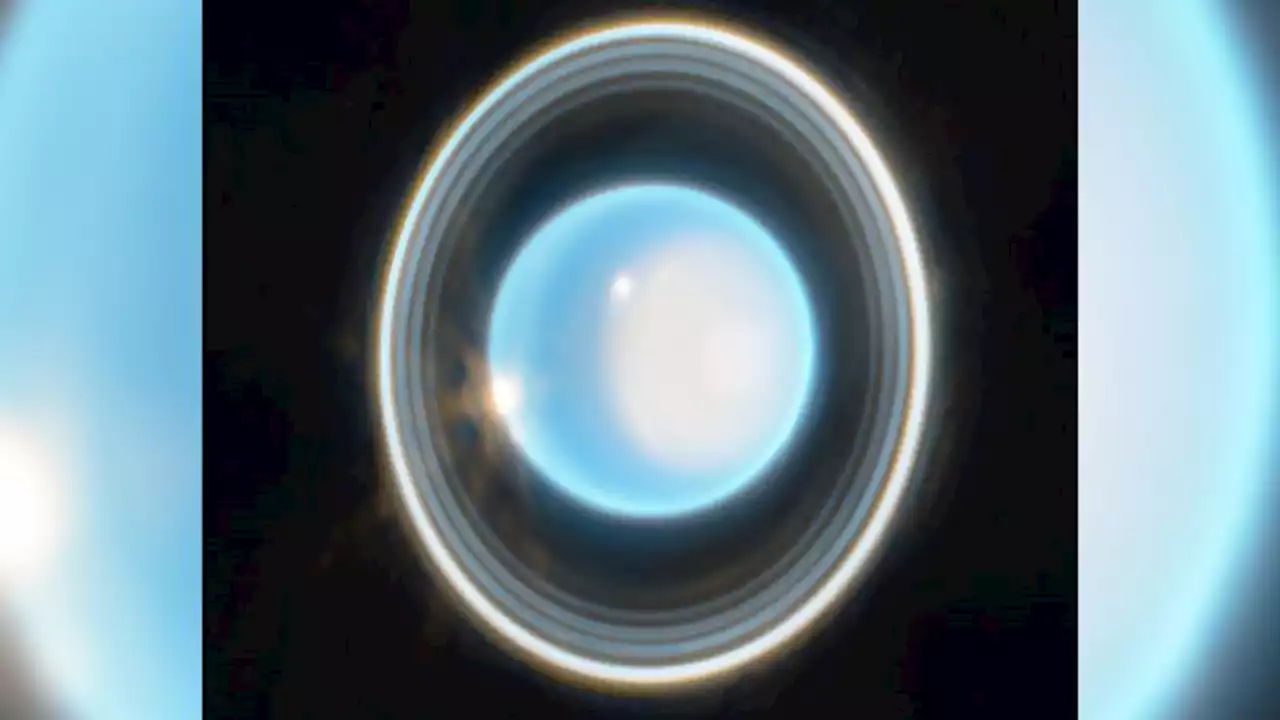 See Uranus' rings in stunning new image from the Webb telescope | CNNThe James Webb Space Telescope has captured a new stunning image of ice giant Uranus, with almost all its faint dusty rings on display.
See Uranus' rings in stunning new image from the Webb telescope | CNNThe James Webb Space Telescope has captured a new stunning image of ice giant Uranus, with almost all its faint dusty rings on display.
Read more »
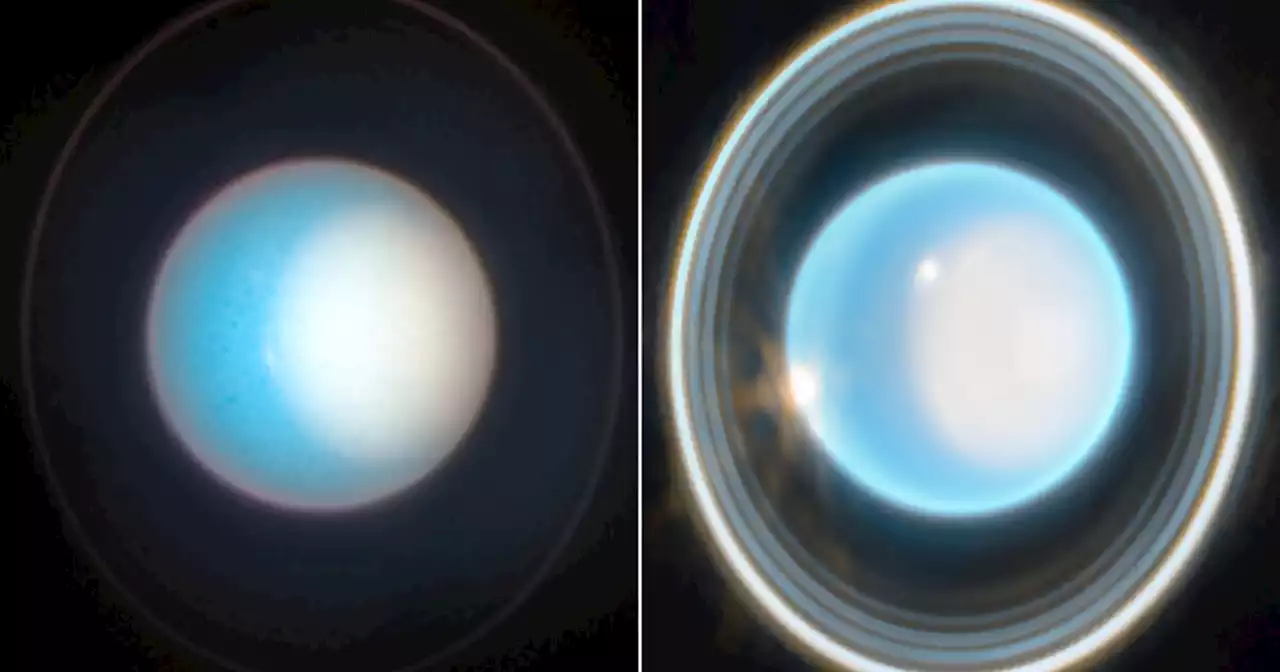 See Uranus' rings in stunning new image from the Webb telescopeThe James Webb Space Telescope has captured a new stunning image of ice giant Uranus, with almost all its faint dusty rings on display.
See Uranus' rings in stunning new image from the Webb telescopeThe James Webb Space Telescope has captured a new stunning image of ice giant Uranus, with almost all its faint dusty rings on display.
Read more »
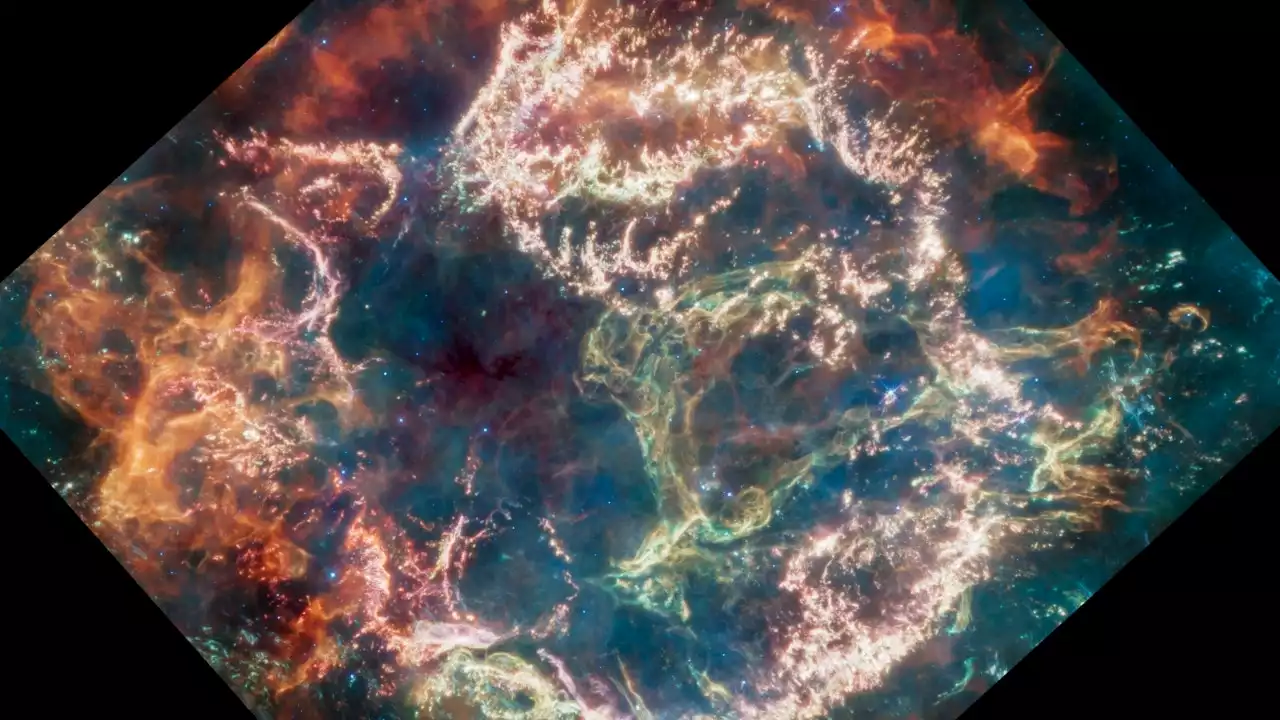 Webb Telescope uncovers new details in stunning image of supernova remnantNASA's James Webb Space Telescope has revealed new details in a supernova remnant created by a massive exploding star 11,000 light-years away in the constellation Cassiopeia.
Webb Telescope uncovers new details in stunning image of supernova remnantNASA's James Webb Space Telescope has revealed new details in a supernova remnant created by a massive exploding star 11,000 light-years away in the constellation Cassiopeia.
Read more »
